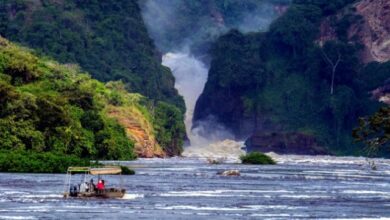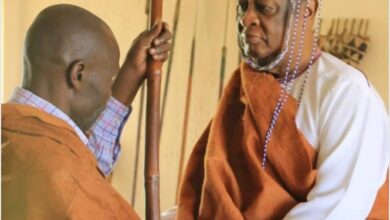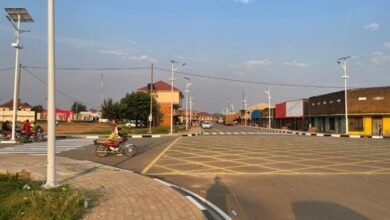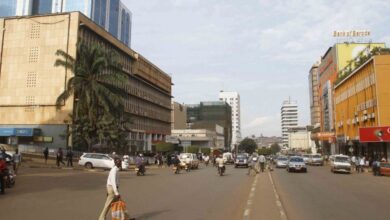TOP STORY! Inside the struggle for safety and dignity in Palabek Refugee Settlement
It is within this context that this investigation into the Palabek Refugee Settlement unfolds.
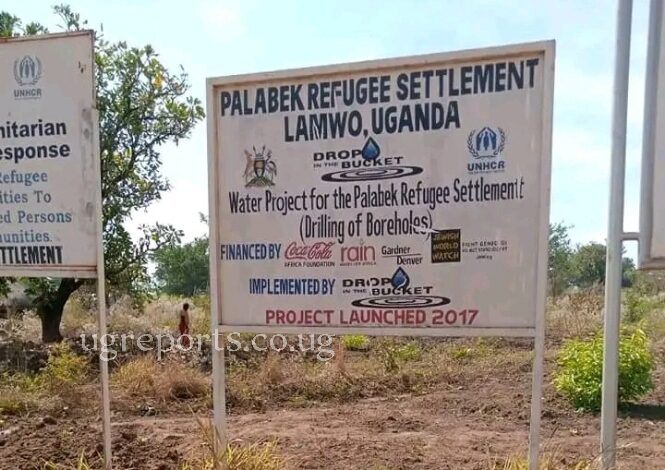
Lamwo: In the heart of East Africa lies Uganda, a country known not only for its stunning natural beauty but also for its exceptional humanitarian ethos.
Uganda’s Open Door Policy towards refugees has earned it a reputation as one of the most welcoming countries in the world for those fleeing conflict, persecution, and instability in their homelands.
For decades, Uganda has opened its borders to millions of refugees, offering them sanctuary and the promise of safety and dignity amidst their most trying times.
This ethos of hospitality is enshrined in Uganda’s refugee policy, which stands in stark contrast to the restrictive measures adopted by many nations around the globe. Instead of erecting barriers and turning away those in need, Uganda has embraced a compassionate approach rooted in the belief that every individual, regardless of their nationality or circumstance, deserves a chance to rebuild their lives in safety and dignity.
Central to Uganda’s refugee policy is the principle of inclusion, which extends beyond mere shelter to encompass access to essential services such as education, healthcare, and livelihood opportunities.
In refugee settlements across the country, including Palabek, this inclusive stance is manifested in the provision of basic amenities and the promotion of self-reliance among refugees, fostering a sense of community and resilience amidst adversity.
In the heart of Uganda’s Lamwo District lies the Palabek Refugee Settlement, a sanctuary for those escaping conflict and persecution in neighboring countries. But beyond its fences and amid its makeshift shelters lies a narrative of resilience entwined with struggle, particularly for its female inhabitants.
However, beneath the surface of Uganda’s inclusive stance lies a complex reality that belies the country’s reputation as a safe haven for refugees. Despite the government’s best efforts and the tireless work of humanitarian organizations, refugees in Uganda continue to face a myriad of challenges that threaten their safety, well-being, and dignity.
From inadequate infrastructure and limited access to essential services to persistent food insecurity and safety concerns, the road to refuge in Uganda is fraught with obstacles that test the resilience of those who seek sanctuary within its borders.
It is within this context that this investigation into the Palabek Refugee Settlement unfolds. By shining a light on the lived experiences of refugees within one of Uganda’s largest settlements, we seek to explore the realities that lie beneath the veneer of Uganda’s inclusive stance.
Through firsthand accounts, interviews, and rigorous analysis, we aim to uncover the challenges faced by refugees in Palabek and to amplify their voices in a narrative that is too often overlooked or overshadowed by broader geopolitical discourse.
For years, Palabek has offered refuge primarily to those fleeing South Sudan. Yet the promise of safety often masks the harsh realities faced by its residents, especially women and children. Within this settlement, tales of resilience are plentiful yet heart-wrenching.
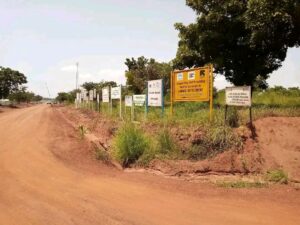
In doing so, we hope to not only provide a comprehensive understanding of the refugee experience in Uganda but also to advocate for policies and interventions that uphold the safety, dignity, and rights of all refugees, both within Palabek and beyond.
Through our exploration of refuge and resilience, we endeavor to shed light on the struggles faced by those who have been forced to flee their homes and to reaffirm our collective commitment to building a world where all individuals are afforded the opportunity to live in safety, dignity, and peace.
Refugee Camp Visits:
In the pursuit of understanding the realities faced by refugees in Uganda, our investigative journey takes us to various refugee camps, including Bidi Bidi, Nakivale, and Kyangwali, before landing at the doorstep of Palabek Refugee Settlement. These camps represent a microcosm of the refugee experience in Uganda, each with its own unique challenges and triumphs.
Through firsthand accounts gathered from refugees residing in these settlements, we endeavor to paint a comprehensive picture of life within Uganda’s refugee communities.
Our journey begins with a visit to Bidi Bidi, currently the largest refugee settlement in Uganda and home to tens of thousands of refugees, primarily from South Sudan. Here, amidst the sprawling expanse of makeshift shelters and bustling community centers, we document the living conditions that define daily life for its inhabitants. From overcrowded living spaces to the scarcity of basic amenities such as clean water and sanitation facilities, the challenges faced by refugees in Bidi Bidi are stark and sobering.
Next, we travel to Nakivale Refugee Settlement, located in southwestern Uganda and home to a diverse population of refugees from countries across the African continent.
Against the backdrop of lush greenery and rolling hills, we witness the resilience of refugees as they navigate the complexities of displacement and seek to rebuild their lives in a new land. Amidst the bustling markets and bustling schools, we document the efforts of humanitarian organizations and local communities to provide essential services such as healthcare, education, and livelihood support to refugees in Nakivale.
Our journey culminates in Kyangwali Refugee Settlement, nestled along the shores of Lake Albert in western Uganda. Here, amidst the tranquil beauty of the natural landscape, we bear witness to the struggles and triumphs of refugees from the Democratic Republic of the Congo and other neighboring countries. From the challenges of food insecurity and inadequate healthcare to the resilience of communities coming together to support one another, the story of Kyangwali is one of perseverance in the face of adversity.
Finally, we arrive at Palabek Refugee Settlement, where our investigative focus narrows to exploring the intricacies of life within one of Uganda’s newest and fastest-growing refugee settlements. Here, amidst the vast expanse of northern Uganda, we document the living conditions, infrastructure, and access to basic services that shape the daily realities of refugees in Palabek.
Through firsthand accounts and rigorous documentation, we aim to shed light on the struggles and resilience of those who call Palabek home, amplifying their voices in a narrative that is too often overlooked or overshadowed by broader geopolitical discourse.
The journey to Palabek is fraught with danger and uncertainty. Many women arrive with nothing but the clothes on their backs, having endured unimaginable horrors along the way. They carry the weight of trauma, loss, and displacement, yet find the strength to rebuild their lives within the settlement’s confines.
In our exploration of refugee camps across Uganda, we seek to uncover the untold stories of refuge and resilience that lie at the heart of the refugee experience. Through our documentation of living conditions, infrastructure, and access to essential services, we hope to provide a comprehensive understanding of the challenges faced by refugees in Palabek and beyond, while also celebrating the strength, resilience, and humanity that bind us all together in the pursuit of safety, dignity, and belonging.
Interviews:
To delve deeper into the multifaceted realities of life within Palabek Refugee Settlement, our investigative journey leads us to engage in a series of interviews with individuals from diverse backgrounds, including refugees from different nationalities, ages, and genders, as well as members of local Ugandan communities, aid workers, and government officials. Through these interviews, we aimed to capture a spectrum of perspectives and experiences that illuminate the challenges, resilience, and hopes for the future within the settlement.
First and foremost, our interviews with refugees form the cornerstone of our investigation. By speaking with individuals from various nationalities, ages, and genders, we seek to amplify their voices and shed light on their unique experiences of displacement, resilience, and survival.
From the elderly grandmother who fled conflict in South Sudan to the young child born within the confines of the settlement, each individual brings a different perspective to the table, enriching our understanding of the diverse tapestry of human experience within Palabek.
Through open-ended questions, we invite refugees to share their stories, challenges, and hopes for the future, providing a platform for their voices to be heard in a narrative often dominated by broader geopolitical discourse.
In addition to interviews with refugees, we engage with members of local Ugandan communities, aid workers, and government officials to gain insights into their roles and perspectives on refugee issues. By speaking with Ugandan villagers living in the vicinity of Palabek Refugee Settlement, we seek to understand the dynamics of interaction and integration between refugees and host communities.
One of the most pressing issues faced by refugee women in Palabek is the constant threat of gender-based violence (GBV). Despite efforts by humanitarian organizations to provide safe spaces and support services, incidents of GBV remain alarmingly high. From domestic abuse to sexual assault, women here face myriad dangers simply because of their gender.
Kerima, a young mother from South Sudan, shares her harrowing experience: “I thought coming here would mean safety for my children and me. But even here, we are not always safe. My neighbor’s husband beats her almost every night, and I fear for my own safety.”
In June 2023, during the commemoration of World Refugee Day at Paluda SS in Palabek Ogili Subcounty, Lamwo district, John Pasquale, the Refugee Welfare Council III representative at Palabek Refugee Settlement, urged the government, specifically the Ministry of Relief, Disaster Preparedness, and Refugees, to permit large-scale farming instead of small-scale farming on their plots.
Pasquale emphasized that such a shift would enhance food security within the settlement, thereby reducing reliance on food aid provided by the World Food Programme. Additionally, he appealed to the host communities to allocate more land for farming purposes.
Through conversations with aid workers from various humanitarian organizations operating within the settlement, we delve into the challenges and successes of providing assistance to refugees in the face of limited resources and logistical constraints. Finally, by interviewing government officials responsible for refugee affairs, we aim to gain a deeper understanding of Uganda’s refugee policies and their implementation on the ground, as well as to explore avenues for collaboration and improvement in refugee support systems.
In March 2024, Lamwo District Speaker, Hon. Ochola James, revealed that internal conflicts escalated, predominantly involving members of the Nuer groups. Reportedly, tensions within the group stemmed from a dispute over a marriage within one of the Nuer sub-clans, tragically resulting in the death of one member.
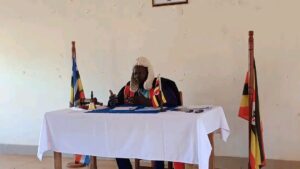
Additionally, he stated that authorities have notified the Resident District Commissioner (RDC) about the situation. Security forces have been temporarily deployed to prevent any further violence.
Furthermore, it has been reported that a group of approximately 80 youths from the Nuer community is suspected of initiating further attacks. These individuals are allegedly armed with sharp tools, causing anxiety among both the refugee and host communities across various zones.
In April 2024, ACP Anatoli Katungwesi, the Aswa East Regional Police Commander, confirmed that out of the 77 South Sudanese refugees previously detained at Palabek Settlement, a total of 21 men are slated to appear before court.
Katungwesi stated that these individuals were apprehended following clashes among Nuer sub-clans within the settlement, which resulted in the deaths of three individuals. He further clarified that while the majority of those arrested were youth, some were not registered refugees in Palabek and originated from Kiryadongo and Adjumani refugee camps.
Following comprehensive screening, the files of 21 suspects, including juveniles, have been prepared for court proceedings.
Earlier, Lamwo District RDC Oceng Geoffrey Osborne, in collaboration with refugee welfare committees from the 74 blocks in the settlement, convened a meeting. They established zonal security committees with the mandate of addressing and reporting any potential clashes. Their primary objective is to prevent further internal conflicts and attacks within the refugee community in Palabek.
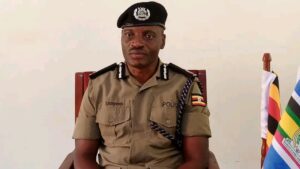
Organizations like the United Nations High Commissioner for Refugees (UNHCR) and various NGOs tirelessly work to address the multifaceted needs of refugee women in Palabek. From providing psychosocial support to promoting women’s economic empowerment, these efforts are essential for ensuring women not only survive but thrive in their new environment.
In April 2024, the UGANET Legal Team in Lamwo District led a community training on enforcing human rights at Zone 6 Palabek Refugee Settlement. They conducted a comprehensive and informative legal information session covering essential topics on human rights, empowering the community to stand up for their rights and protect themselves.
Mrs. Aleng Joan, an expert on human psychological development, reports that cultural factors are the leading causes of abuses against female refugees in Palabek, though most NGOs offer fair treatment for both genders.
Through our comprehensive approach to interviews, we endeavor to capture the complexities of life within the Palabek Refugee Settlement from multiple perspectives. By amplifying the voices of refugees and engaging with stakeholders from local communities, aid organizations, and government agencies, we seek to uncover the intersecting challenges and resilience that define the refugee experience in Uganda. In doing so, we hope to foster empathy, understanding, and dialogue while also advocating for policies and interventions that uphold the safety, dignity, and rights of all individuals, regardless of their nationality or circumstance.
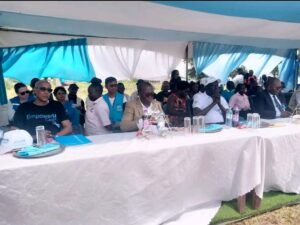
Thematic Focus:
As we delve deeper into the heart of Palabek Refugee Settlement, our investigative lens focuses on the thematic exploration of the challenges faced by its inhabitants, ranging from the fundamental aspects of survival to the complexities of integration and social cohesion with host communities. Through rigorous analysis and firsthand accounts, we unravel the intricate tapestry of refuge and resilience that defines life within the settlement.
Food Insecurity and Nutrition: At the core of the refugee experience lies the struggle for sustenance. Within Palabek Refugee Settlement, food insecurity looms large, exacerbated by limited resources and the precariousness of life in displacement.
Through interviews with refugees, aid workers, and local officials, we uncover the harsh realities of hunger and malnutrition that plague the community, shedding light on the challenges of accessing adequate food supplies and nutritious meals amidst the constraints of the settlement environment.
Healthcare Access and Medical Challenges: Amidst the backdrop of adversity, access to healthcare emerges as a critical concern for refugees in Palabek. Limited infrastructure, shortages of medical supplies, and barriers to healthcare services pose significant challenges to the well-being of inhabitants. Through first-hand accounts and data analysis, we examine the gaps in healthcare provision within the settlement, highlighting the urgent need for improved access to medical care and the resilience of communities in the face of medical challenges.
Education and Skill Development: Despite the hardships they face, refugees in Palabek remain steadfast in their pursuit of education and skill development as pathways to empowerment and self-reliance. Through interviews with students, teachers, and community leaders, we explore the transformative potential of education within the settlement while also shedding light on the barriers to learning and skill development that persist. From overcrowded classrooms to limited resources, we uncover the challenges and opportunities that shape the educational landscape in Palabek.

Safety and Security Concerns: In the quest for safety and dignity, refugees in Palabek grapple with a myriad of safety and security concerns that threaten their well-being and livelihoods. From gender-based violence to the risk of theft and exploitation, the specter of insecurity looms large within the settlement.
Through interviews with survivors, community leaders, and security personnel, we delve into the complexities of addressing safety and security challenges within Palabek while also highlighting the resilience of communities in the face of adversity.
Integration and Social Cohesion with Host Communities: Beyond the confines of the settlement, the journey towards refuge and resilience intersects with the dynamics of integration and social cohesion with host communities. Through conversations with refugees, local residents, and community leaders, we explore the complexities of building bridges across cultural divides and forging bonds of solidarity amidst diversity.
From shared spaces to collaborative initiatives, we uncover the stories of resilience and mutual support that underscore the quest for integration and belonging within the Palabek Refugee Settlement.
Through our thematic exploration, we aim to illuminate the multifaceted nature of the refugee experience in Palabek, shedding light on the challenges, triumphs, and complexities that define life within the settlement. By amplifying the voices of refugees and engaging with stakeholders from all walks of life, we seek to foster empathy, understanding, and dialogue while also advocating for policies and interventions that uphold the safety, dignity, and rights of all individuals, both within Palabek and beyond.

Data and Statistics:
In our investigation into the Palabek Refugee Settlement, we recognize the importance of data and statistics in providing context and depth to our understanding of the refugee experience. Through rigorous data collection and analysis, we aim to uncover key trends, patterns, and challenges that shape life within the settlement, shedding light on the realities faced by its inhabitants.
Refugee Populations and Camp Capacities: Our investigation begins by collecting data on the size and composition of the refugee population within the Palabek Refugee Settlement. By examining official records and conducting surveys, we seek to determine the number of individuals residing in the settlement, as well as their nationalities, ages, and genders. Additionally, we gather information on the capacity of the settlement, including the number of shelters, infrastructure facilities, and available resources to support the population.
Aid Distribution: Central to the well-being of refugees within Palabek is the distribution of humanitarian aid and assistance. Through analysis of aid distribution records and interviews with aid workers, we assess the adequacy and effectiveness of aid delivery mechanisms within the settlement.
By examining the types of assistance provided, including food rations, medical supplies, and educational materials, we aim to understand the impact of aid on the lives of refugees and the challenges faced in ensuring equitable distribution.
Refugee Arrivals, Departures, and Resettlements: To gain insights into the dynamics of displacement and resettlement within Palabek, we analyze statistics on refugee arrivals, departures, and resettlements. By examining trends over time, we seek to understand the factors driving population movements within the settlement, including fluctuations in conflict, political instability, and environmental conditions in neighboring countries.
Additionally, we explore the processes and challenges associated with refugee departures and resettlements, including voluntary repatriation, relocation to third countries, and local integration initiatives.
Through our comprehensive analysis of data and statistics, we aim to provide a nuanced understanding of the refugee experience in Palabek Refugee Settlement. By uncovering key trends and patterns, we seek to identify areas for intervention and advocacy while also amplifying the voices of refugees and advocating for policies and programs that uphold their safety, dignity, and rights.
In doing so, we hope to contribute to a more informed and empathetic discourse on refugee issues while also fostering dialogue and collaboration towards lasting solutions to the challenges faced by displaced populations around the world.
Visual Storytelling:
In our investigative journey into Palabek Refugee Settlement, we recognize the power of visual storytelling to convey the complex realities faced by its inhabitants. Through a combination of photographs, videos, and infographics, we aim to bring the stories of refugees to life, shedding light on their resilience, resourcefulness, and the challenges they face in their quest for safety and dignity.
Photographs: Photographs serve as a window into the daily lives of refugees within Palabek, capturing moments of joy, resilience, and struggle amidst the backdrop of displacement.
From images of children playing amidst the makeshift shelters to portraits of elderly refugees sharing stories of resilience, photographs offer a glimpse into the humanity that thrives within the settlement.
Through visual documentation of living conditions, infrastructure, and community activities, we seek to convey the realities faced by refugees in Palabek while also highlighting the strength and resilience that define their collective spirit.
Videos: Videos provide a dynamic medium through which to amplify the voices of refugees and bring their stories to a wider audience. Through interviews, testimonials, and immersive footage of daily life within Palabek, we aim to capture the nuances of the refugee experience and convey the challenges and triumphs faced by its inhabitants.
Whether documenting the struggles of accessing healthcare, the joy of learning in makeshift classrooms, or the resilience of communities coming together in times of adversity, videos offer a powerful platform for storytelling that resonates with viewers on a visceral level.
The Lamwo district speaker, Hon. Ochola James, narrates that most female refugees in Palabek suffer from child marriage and teenage pregnancies due to cultural practices in South Sudan. These cases have even sparked subclan wars within the Nuer tribe, resulting in fatalities.
Through our comprehensive approach to visual storytelling, we aim to shine a light on the resilience and resourcefulness of refugees within Palabek Refugee Settlement while also highlighting the challenges they face in their quest for safety and dignity. By leveraging the power of photographs, videos, and infographics, we seek to engage and inspire audiences, fostering empathy, understanding, and advocacy for the rights and well-being of all individuals, regardless of their nationality or circumstance.
Policy Analysis:
As we delve into the intricacies of life within the Palabek Refugee Settlement, it becomes imperative to scrutinize Uganda’s refugee policies and international agreements, along with investigating the funding and resource allocation mechanisms that underpin refugee support within the settlement.
Through a rigorous policy analysis, we aim to unravel the strengths and shortcomings of the existing framework, advocating for reforms that prioritize the safety, dignity, and well-being of all refugees.
Uganda’s Refugee Policies and International Agreements: Uganda has long been celebrated for its progressive approach to refugee protection, anchored in a robust legal and policy framework. The Refugee Act of 2006 and subsequent Refugee Regulations provide the legal basis for refugee protection and outline the rights and responsibilities of both refugees and host communities.
Moreover, Uganda is a signatory to key international agreements, including the 1951 Refugee Convention and its 1967 Protocol, which affirm its commitment to providing sanctuary to those fleeing persecution and conflict. Through a comprehensive review of these policies and agreements, we aim to assess their adequacy in promoting the safety, dignity, and inclusion of refugees within Palabek and across the country.
Funding and Resource Allocation for Refugee Support: The provision of assistance to refugees within the Palabek Refugee Settlement relies heavily on funding and resources from both domestic and international sources.
Uganda’s refugee response is supported by government funding, donor contributions, and humanitarian assistance from organizations such as the United Nations High Commissioner for Refugees (UNHCR) and various NGOs.
However, despite these efforts, funding shortfalls and resource constraints often hinder the delivery of essential services and support to refugees. By investigating funding mechanisms and resource allocation patterns, we aim to identify gaps and inefficiencies in the provision of refugee support services, advocating for increased investment and innovative approaches to address the complex needs of refugees within Palabek and beyond.
Through our policy analysis, we endeavor to shed light on the institutional and structural factors that shape the refugee experience within Palabek Refugee Settlement. By scrutinizing Uganda’s refugee policies and international agreements, as well as the funding and resource allocation mechanisms that underpin refugee support, we seek to advocate for reforms that prioritize the safety, dignity, and rights of all individuals, regardless of their nationality or circumstance. In doing so, we aim to contribute to a more equitable and compassionate approach to refugee protection, grounded in the principles of solidarity, inclusion, and respect for human rights.
Conclusion:
As our investigative journey draws to a close, we reflect on the complexities and realities uncovered within Palabek Refugee Settlement, situated amidst the vast expanse of Uganda’s northern region. Through our exploration of refuge and resilience, we have borne witness to the triumphs and tribulations of those who call Palabek home, shedding light on the profound challenges and enduring strengths that define life within the settlement.
In summarizing our findings, we acknowledge the successes and challenges of Uganda’s open-door policy towards refugees. The country’s reputation as a welcoming haven for those fleeing conflict and persecution is undeniable, rooted in a legal and policy framework that upholds the rights and dignity of refugees.
The commitment to inclusion and solidarity, enshrined in Uganda’s refugee policies and international agreements, has enabled refugees in Palabek and beyond to rebuild their lives and communities amidst the uncertainty of displacement.
However, alongside these successes lie significant challenges that demand urgent attention and action. The reality of life within Palabek Refugee Settlement is marked by overcrowded living conditions, limited access to essential services, and persistent vulnerabilities that threaten the safety and well-being of its inhabitants. From food insecurity and inadequate healthcare to the struggle for education and livelihood opportunities, the road to refuge is fraught with obstacles that test the resilience of refugees on a daily basis.
In light of these challenges, we offer the following recommendations for improving refugee support and addressing the identified gaps within Palabek Refugee Settlement:
Enhanced Access to Essential Services: Prioritize efforts to improve access to healthcare, education, clean water, and sanitation within the settlement, ensuring that refugees have the necessary resources to thrive and rebuild their lives.
Livelihood and Skills Development: Invest in programs and initiatives that promote economic empowerment and skill development among refugees, enabling them to become self-reliant and contribute positively to their communities.
Safety and Security Measures: Strengthen measures to address safety and security concerns within the settlement, including gender-based violence, theft, and exploitation, to ensure the safety and well-being of all inhabitants.
Integration and Social Cohesion: Foster dialogue and collaboration between refugees and host communities, promoting mutual understanding, respect, and solidarity to enhance social cohesion and inclusion.
Sustainable Funding and Resource Allocation: Advocate for increased funding and resource allocation for refugee support, both from domestic and international sources, to address the diverse and evolving needs of refugees within Palabek and beyond.
Through the implementation of these recommendations, we envision a future where refugees in Palabek Refugee Settlement and across Uganda are able to live with dignity, safety, and hope for a better tomorrow.
By amplifying their voices, advocating for their rights, and fostering empathy and understanding, we stand in solidarity with those who have been forced to flee their homes in search of refuge and resilience amidst the struggle for safety and dignity.
Do you have an advertisement or article you want to publish? Mail us at theugreports@gmail.com or WhatsApp +256757022363.



